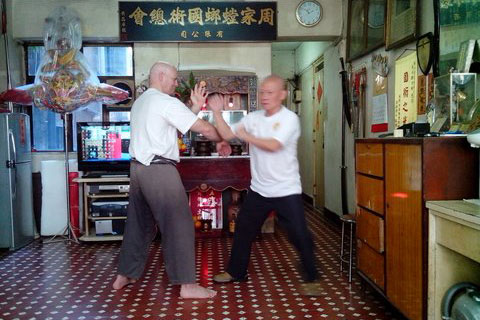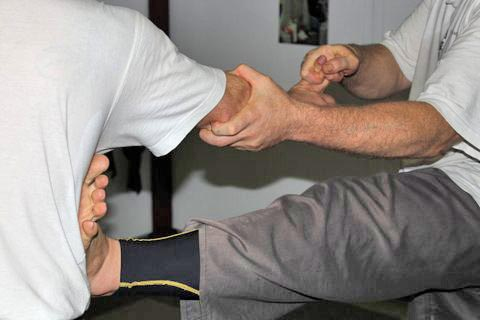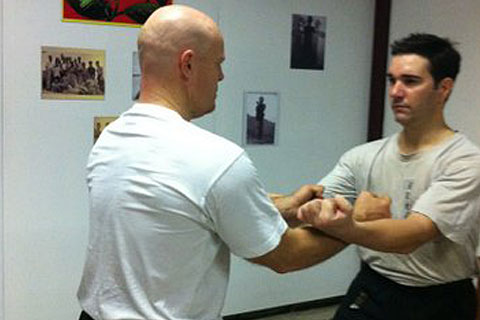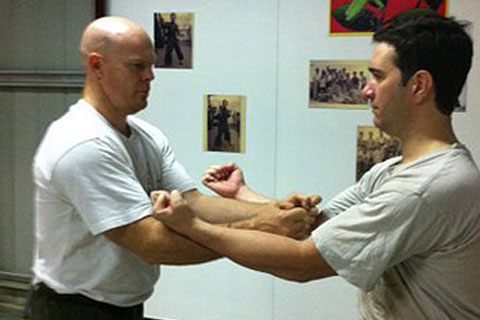The Chow Gar style
Chow Gar or Chow Family Mantis system largely consists of close range hand and foot techniques. But other parts, such as head, shoulders, elbows, hips and knees are constantly used. Biting and spitting are also used to defend, but are only used when very close to the opponent.
There are several powers within the system, ranging from sharp heavy power to softer more malleable heavy power. Both useful for hitting and catching of limbs.
The system is stimulated at a higher level by a softer side known as Swimming Dragon and Grab Dragon Hand or Cantonese Yow Loong and the latter la loong sau. Not Tai Chi or Cantonese known as Tai Geck. This important part of the system opens and rounds areas that require it.
Chow Gar include the use of simple, direct and aggressive attacks with simultaneous defence and tends to use narrow upright stances.
The greatest difference of the Mantis style to other Southern systems is in the generation of Kiu Sao (bridge arms). By using the coordinated strength of a strong stance, powerful waist, rib power and elbow strength, the expert Mantis practitioner develops a guard that is both heavy and alive. This means the practitioner can change from defence to attack in an instant by “feeling” an opponent’s intention then simultaneously countering and overpowering it.
What is Bridge?
Bridge or Kiu in the Cantonese language. Means exactly that. The word Kiu in cantonese is the same name used to explain a bridge that joins two bodies of land together.
The same is used to translate the meaning for martial training in this particular system. The arms and legs are the extended bridges, supported by the torso or bodies of land. In this case though the bodies of land are flexible, providing the ability to adjust to the pressure from the other body, eg partner or attacker.
The key to all bridge training is to provide the correct surface in both training directions. To provide the correct pressure from the body and limbs so the energy from one body can transfer into the other with accuracy. This in turn creates bridge, not only through the limbs but also the body.







